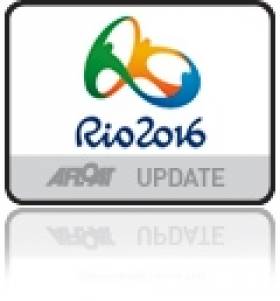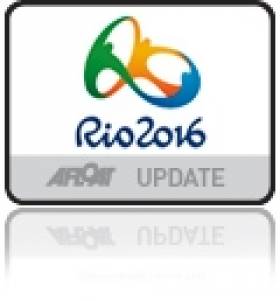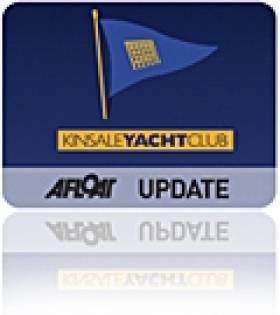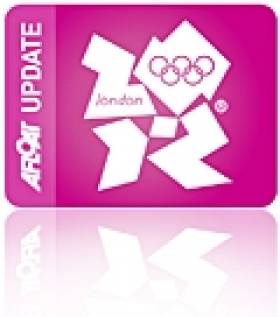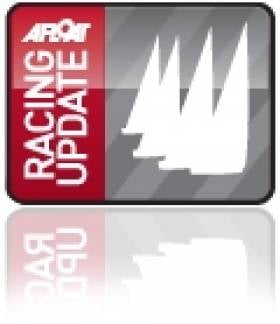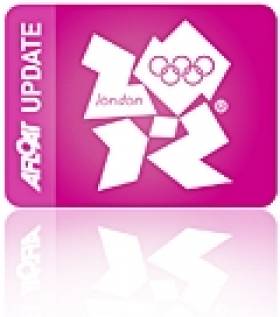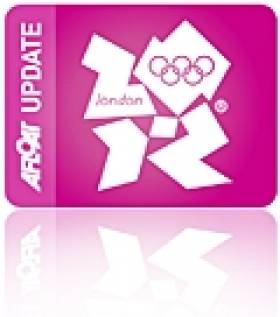Displaying items by tag: Paralympic
#IFDS – On the eve of the International Federation for Disabled sailing (IFDS) World Sailing Championships being staged in Kinsale, County Cork next month, its President, Irish Paralympian John Twomey, has warned of the potential bankruptcy of the world body arising out of substantial legal costs incurred in an action over the results of the Sonar class at the London 2012 Paralymics.
Writing in the association's latest newsletter Twomey, who became IFDS president at last November's ISAF world sailing conference in Dublin, says the costs involved are 'a major problem for IFDS as we do not currently have sufficient funds to pay for the fees and costs incurred without third party assistance'.
Twomey goes on to say 'the insufficiency of funds could in turn lead to the Executive Committee having to place IFDS in bankruptcy'.
IFDS met with ISAF in London on 2 July 2013 to discuss the possible integration of both organisations. The situation is ongoing, according to the Kinsale based President.
In the recent case, Twomey writes the Arbitrator upheld IFDS's initial contention that CAS lacked jurisdiction in this case and the result of the Sonar class at the London 2012 Paralympic stand. The arbitrator also ruled that the British Paralympic Association (BPA) must reimburse the other parties for the substantial fees paid to CAS, but that each party must pay its own legal fees and costs. In addition to legal fees, IFDS has incurred substantial costs for witness travel and other expenses.
To date entries have been received from 19 countries in the One-Person Keelboat, 2.4mR; 4 countries in the Two-Person Keelboat, SKUD18 and 12 countries in the Three-Person Keelboat, Sonar for the IFDS world championships to be held at Twomey's home waters of Kinsale in August.
Separately, this week the Irish Paralympic team signed a four year sponsorship deal with Providence Resources for the Rio Games.
Kinsale Salutes Twomey's Paralympic Sailing Achievements with IFDS World Championships
#ifdsworlds– Kinsale Yacht Club (KYC) in County Cork has launched the first major Paralympic event following London 2012 with 120 disabled sailors from 20 countries expected to attend the International Federation for Disabled Sailing (IFDS) World Championships for 2013 in the south coast town this Summer.
The August event will see three paralympic classes take to the waters of Kinsale harbour; the Sonar three person keelboat, the Scud 18 two person keelboat and the 2.4mR single person keelboat.
Teams from China, Japan, Singapore, Australia, USA, Canada, Brazil, UK, Germany, Italy, France, Greece, Austria, Poland, Norway, Israel, Holland, Portugal and Ireland are expected to attend.
As previously reported on Afloat.ie, Kinsale Yacht Club member John Twomey, a paralympic competitor, is the driving force behind the event.
"I have received so much support from Kinsale and the sailing community over my years of Paralympic competition. It gives me great pleasure to host this event as IFDS President in my home waters".
Twomey has participated in 10 Paralympic Games, more than any other Olympic or Paralympic athlete, was elected President of the International Federation of Disabled Sailors at the ISAF (International Sailing Federation) conference in November 2012. Twomey may still yet campaign for the Rio paralympics in 2016.
Kinsale bid for the event in 2010 against stiff competition from Perth in Australia and Qingdao in China. This is the first time that the IFDS Worlds are being hosted in Ireland. The organising committee, under the direction of Regatta Director John Stallard, has been developing plans since they were awarded the event in 2010.
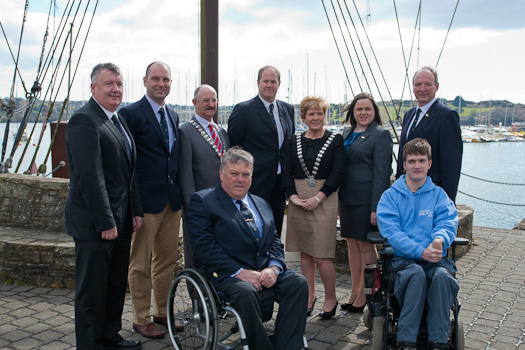
Launching today's IFDS World Championships in Kinsale, County Cork were back row (left to right) Ger Power, Cork County Council; Matthias Hellstern, Kinsale YC; Billy Lynch, Mayor of Kinsale; Cameron Good, Commodore of Kinsale Yacht Club; Barbara Murray, Mayor of Cork County; Janice Twomey (John's daughter); John Stallard, KYC. Front row John Twomey, Kinsale Paralympian and Sam McCarthy, Irish Access Sailing Group. Photo: Bob Bateman
Cork County Council is supporting the Worlds which is one of only three World Championships leading up to the 2016 Paralympic Games in Rio de Janeiro, Brazil.
Speaking at today's launch Mayor of County Cork, Cllr Barbara Murray stated "Cork County Council is delighted to support this major international event in 2013. As part of Cork County Council IFDS Worlds, Kinsale is being marketed internationally as a major tourism and sailing centre of excellence and we look forward to welcoming all the sailors and support teams to a fantastic 10 day event in August".
In addition to the sailors, Kinsale also expects to welcome 300 support staff and family to Kinsale and a full social calendar including a parade and civic reception has been planned.
Kinsale is no stranger to major international events including the Dragon Gold Cup, the biennial Sovereigns Cup, the Figaro single handed race and the Clipper Round the World Yacht Race. Kinsale Yacht Club is currently undergoing major refurbishments in preparation for this year's season.
Disabled Sailing World Championship Heading for Kinsale
#disabledsailing – Kinsale in County Cork launches this summer's International Federation of Disabled Sailing (IFDS) World Championships on Friday.
It's a proud moment for local sailor John Twomey. Not only is he a former commodre of the host club but he's also Ireland's most capped Paralympian and current president of the IFDS.
Kinsale Yacht Club will host the 16-nation event from 22nd to 25th of August 2013. All three paralympic fleets be racing with participating sailors expected from more than 16 countries.
Ten time paralympic sailor Twomey is the new President of the International Association for Disabled Sailing (IFDS).
Twomey was elected at the International Sailing Federation (ISAF) Annual Conference in Dun Laoghaire, Co. Dublin last November. The honour came two months after he competed at his tenth Paralympics in Weymouth, a record for any Irish person competing at either the Olympics or Paralympics.
The launch is expected to announce event sponsors and other plans for the event.
Twomey and Crew End Paralympic Regatta in 11th Place
#paralympics – There was disappointment for John Twomey and his crew today when the final day of racing for the Sonar class at the Paralympic Games had to be cancelled today due to the lack of wind, an issue which has plagued this regatta all week. Twomey, Anthony Hegarty and Ian Costello finished 11th overall. Although they were well off the medals Twomey from Kinsale made the history books by competing in his 10th Paralympics, a record for any Irish person competing at either the Olympics or Paralympics.
Irish Paralympic Sailors Stay Tenth in Weymouth
#paralympic – Irish paralympic sailor John Twomey and his crew placed 10th in Race 5 and 10th in Race 6 in a difficult day afloat in Weymouth today.
The Irish crew finished Day 3 maintaining their position of 10th overall with a further five races left to sail.
The scheduled morning racing had to be postponed for several hours as Portland Harbour was flat calm. Racing finally began for the Sonar class at 2pm in 7 knots of breeze.
Twomey Tenth at Sailing Paralympics
#paralympic – It was a very frustrating day on the water at the Paralympics in Weymouth for the Irish crew of John Twomey, Anthony Hegarty and Ian Costello who were positioned in the top three and lost five places on the last leg to the finish in the three-person Sonar keelboat class.
The Irish sailors at the Paralympic Games are now tenth overall after placing 8th and 11th in the two races of the day.
'We sailed much better than our results show today and we're determined to improve tomorrow', Twomey said after racing.
Conditions remained consistent across the Portland Harbour course with west south westerly winds of between 10-12 knots and gusts of up to 15 knots. The trio got off to a solid start in Race 3 maintaining their position towards the top of the fleet throughout the race.
They had climbed to 3rd by the final leg but exasperatingly slipped five places at the last minute to finish in 8th. They had a more difficult start to Race 4 rounding the first mark in 11th. Fluctuating between 12th and 10th for the duration of the race, the Irish sailors finished in 11th overall.
There are a further seven races left to sail.
First Athletes Selected for Paralympics GB for London 2012
The athletes are the first named members of the British team to achieve selection and are the first athletes to be officially selected for either ParalympicsGB or Team GB.
The five athletes who will compete in the British team in sailing are:
John Robertson, Hannah Stodel and Stephen Thomas – Sonar (three-person keelboat event)
Alexandra Rickham and Niki Birrell – SKUD 18 (two-person keelboat event)
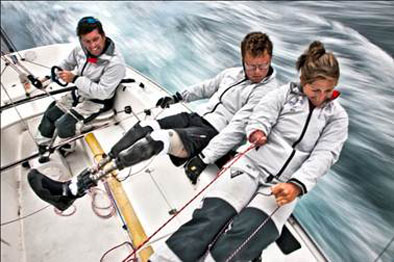
Stephen Park, Olympic Manager at the Royal Yachting Association, said: "Over the past three years we've been trying hard to move our sailors forward from being medal possibles to medal probables, These two selected teams have managed to deliver consistent medal-winning performances that gave the RYA's Paralympic Selection Committee great confidence in their early nomination.
"From a team management perspective, early nomination now allows the sailors to optimise their programme over the next 12 months such that the goal of winning medals at the London 2012 Games is not compromised by any of the expectations, restrictions or commitments that exist through the selection process."
Chief Executive of the BPA, Tim Hollingsworth, said: "This is a very exciting moment in the build-up to London: the selection of the first athletes who will represent this country in 2012 really brings it home that the Games are just around the corner.
"I am delighted that the first athletes to achieve this honour are being selected to ParalympicsGB. They have worked very hard over many years to achieve this and I hope the nation will join me in congratulating them now and supporting them in a year's time on the water at Weymouth and Portland."
Penny Briscoe, Performance Director at the BPA, said: "It is a great privilege for me to be here in Weymouth and Portland today to congratulate personally these athletes on their selection.
"Their recent results at the World Championships, in which Niki and Alex won their third successive World title and John, Hannah and Stephen won World silver, are not only testament to their hard work and ambition but are also a credit to the world-class performance environment that the RYA has in place to support their Olympic and Paralympic athletes. Make no mistake, these athletes have done just as much to earn their place as the Olympic sailors are doing right now to achieve theirs."
Commenting on their selection, the athletes said;
Alexandra Rickham:
"It's great to be selected, we're really very happy and excited and looking forward to next year and putting in the hard work to try and ensure we get a medal this time around.
"The hard work is just about beginning – I'd say that everyone ramps up their campaigns and their preparations towards the big event, so we'll be pushing harder than ever.
"A medal at London 2012 would make up for everything that happened in Beijing, and more! It was a big decision for Niki and I as to whether would continue after Beijing – we'd had such a short lead up to Beijing that we didn't really owe each other anything. But there was unfinished business, so we did carry on, and we're both determined to learn the lessons from before and perform at our home Games.
"Our recent World Championship win at Weymouth and Portland has definitely given us confidence for next year – not only for ourselves, but it was also important for the other teams to see we could lay it down at our home venue after a string of silvers at the Sail for Gold Regatta. We showed at the right time at a major event that we could pull it out the bag and prove to the other teams that we can do it in the Games venue."
Niki Birrell:
"I'm personally delighted to have been given another chance at winning a Paralympic medal by the selectors . Ever since the last race in China we've been doing all we can to win a medal in 2012 – preferably a gold one – and selection now helps us focus our efforts towards doing that. It's a fantastic feeling, but the hard work hasn't even started yet. We're desperate to bring home a medal for the team.
"It's fantastic to have won the Worlds at the Games venue, but we always have to move forwards. We can't be sitting around and getting fat waiting for 12 month's time! Our rivals will be doing to their best to catch us so we're going to have to work hard to stay on top.
"It would mean everything to me to win gold next year. I've been sailing since I was nine years old, and full time for the last four years. Winning gold would be fantastic not just for me, but all the people who have helped us along the way. It would be perfect if it happens, but we've got 12 months of extensive work and dedication before then."
John Robertson:
"It's pretty awesome and we're chuffed to get selected now, and means we can use the time we have to concentrate on going faster and faster. It's definitely not job done yet – we've got key events next year at the Worlds, Miami OCR and the Hyeres regatta to use to get better at so that when it comes to the Games we're in great shape.
"We're in a much better place coming into these this Games that at the previous two, and it's amazing how much we can see that we've moved forwards.
"We were disappointed to win silver at the Worlds this year, missing out in the protest room, but it's down to us to get keep putting the work in to get faster so that we do enough on the water and avoid being in the situation where that can happen in 12 month's time.
"After two Games of trying, it would be amazing to finally win a Paralympic gold at a home Games. It would be the icing on the cake and pretty special, but we need to keep the focus until then."
Stephen Thomas
"It's fantastic to be representing Great Britain for another Games and it's great to be selected early. We'll enjoy the moment, but for us, it's all part of the process and our big focus needs to be on making the boat go faster over the 12 months.
"We've not yet won a Paralympic medal and for the last few years we've not managed to win a gold at the World Championships, so we'll have that in the locker and will be using that as motivation to strive for gold next year.
"When I think about the possibility of winning a medal at next year's Games and the thought of standing on the podium, it brings a tear to my eye. For it to have that kind of emotional response just shows how much it means to me, and that's why we'll be giving it everything we've got to try and make that a dream a reality next year."
Hannah Stodel
"It's weird in some ways as we never expected to be selected this early – and it's crazy to think that we're the first athletes to be officially selected for 2012! It's great that the selectors have that much faith in us – we now have to look forward to the next 12 months and carrying on the hard work we've been putting in.
"We'll have our new boat ready soon – she's called Mandeville, through kind permission of LOCOG – so we'll be spending the autumn and winter getting to grips with her and getting her ready.
"It would be a dream come true to win a medal in London 2012, it's what we've been working towards for so long. We've been to two Games before and I don't want any more free t-shirts – I want a medal this time!"
The athletes will continue their preparations for London over the coming months.
Selection trials for the 2.4mR one-person keelboat event are ongoing.
Racing Round up: Dun Laoghaire Regatta, ISAF Youths, Optimists, Paralympic, RORC, WIORA, Quarter Ton, Kiteboarding.
In offshore news, the Transatlantic Race 2011 Nears a Finish, and RORC yachts that headed West did best in the St Malo from Cowes race. Ireland's entry in the Tall Ships race, Celtic Mist, is safely in Scotland. WIORA starts this week in Clifden, thirty boats are expected.
Two top Cork performers are in Cowes for this week's Quarter Ton Cup.
In other boating news, rower Siobhan McCrohan won bronze at the World Rowing Champs in Lucerne, Kiteboarding debuted in Dun Laoghaire. There were Medals for Irish Kayakers at Athens Special Olympics.
And finally after a Elaine 'Shooter' Alexander is set for hero's welcome this week as she becomes the first woman from Northern Ireland to circumnavigate the island of Ireland.
All on our home page this morning, thanks for your interest in Irish Sailing and Boating.
Paralympic Sailing - Kinsale Trio are London Bound
Coming into racing today at the IFDS World Championships at Weymouth with one race to go, in the Sonar Class John Twomey and his crew Anthony Hegarty and Ian Costello from Kinsale Yacht Club were fairly confident they would take one of the six qualifying spots left for the 2012 Paralympic Regatta at Weymouth. Eight of the 14 places available had already been allocated.
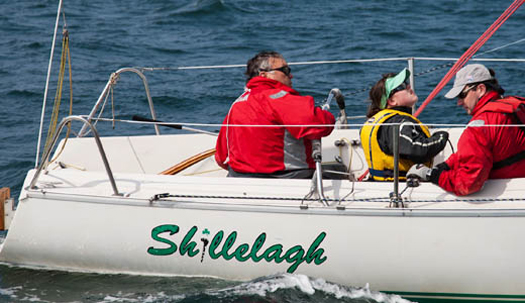
John Twomey has qualified in the Sonar class for next year's Paralympic Games in London. Photo: Bob Bateman
However, one can never be sure of anything until the last race has been sailed. Little did they know that such was to be the case today and with wind strength of 30 knots the last race for all classes was abandoned.
Jubilation then set in as the Irish crew realized they were indeed qualified, taking the second spot behind USA of the six remaining places. They were followed by Australia, Canada, Austria and Japan in that order making up the total of 14 sailors to compete in the Sonar Paralympic fleet in 2012.
Set-back for Twomey in Weymouth
There have been set backs for the Irish Paralympic crew today in the Sonar Class at Weymouth in the IFDS Worlds writes Claire Bateman.
Crews braved winds of more than 20 knots in Portland Harbour today as Weymouth and Portland's finally lived up to its reputation as a breezy venue after three days of light and fluky airs.
Things are really starting to hot up with two days and three races to go.

Gear failure has dropped Shillelagh to 12th. Photo: Bob Bateman
In spite of the fact that they suffered gear breakages in both races today that saw them slip to 12th place from 9th yesterday, when speaking with John Twomey after racing, he and his crew remained confident of qualifying the Irish spot for the 2012 Paralympics. Eight countries have qualified already and with six places remaining to be filled and, making the calculations, he said, except for disaster, they were very hopeful of making the qualification. He said that in to-day's racing they had to contend with winds of 25 knots making for extremely difficult conditions.
With the breezes well over 20 knots the 155 sailors competing at the RYA-run event at Weymouth and Portland National Sailing Academy this week were provided today with a completely different challenge to the first three days of racing and with the strong winds now forecast to remain for the rest of the week, the competitors are facing some close to the knuckle sailing. Competition in the Sonar Class is extremely keen and includes top world level sailors. Defending World champion Thierry Schmitter (NED) continued his march to his third consecutive crown with a first and second today, increasing his lead to 17 points over Britain's Helena Lucas. A good day for Schmitter's Dutch team mate Andre Rademaker saw him move into the medal places, as a race eight disqualification for Britain's Megan Pascoe saw her drop to fourth.
Racing continues tomorrow(Thurs) with Races 9 and 10 and will finish with Race 11 on Friday.




























